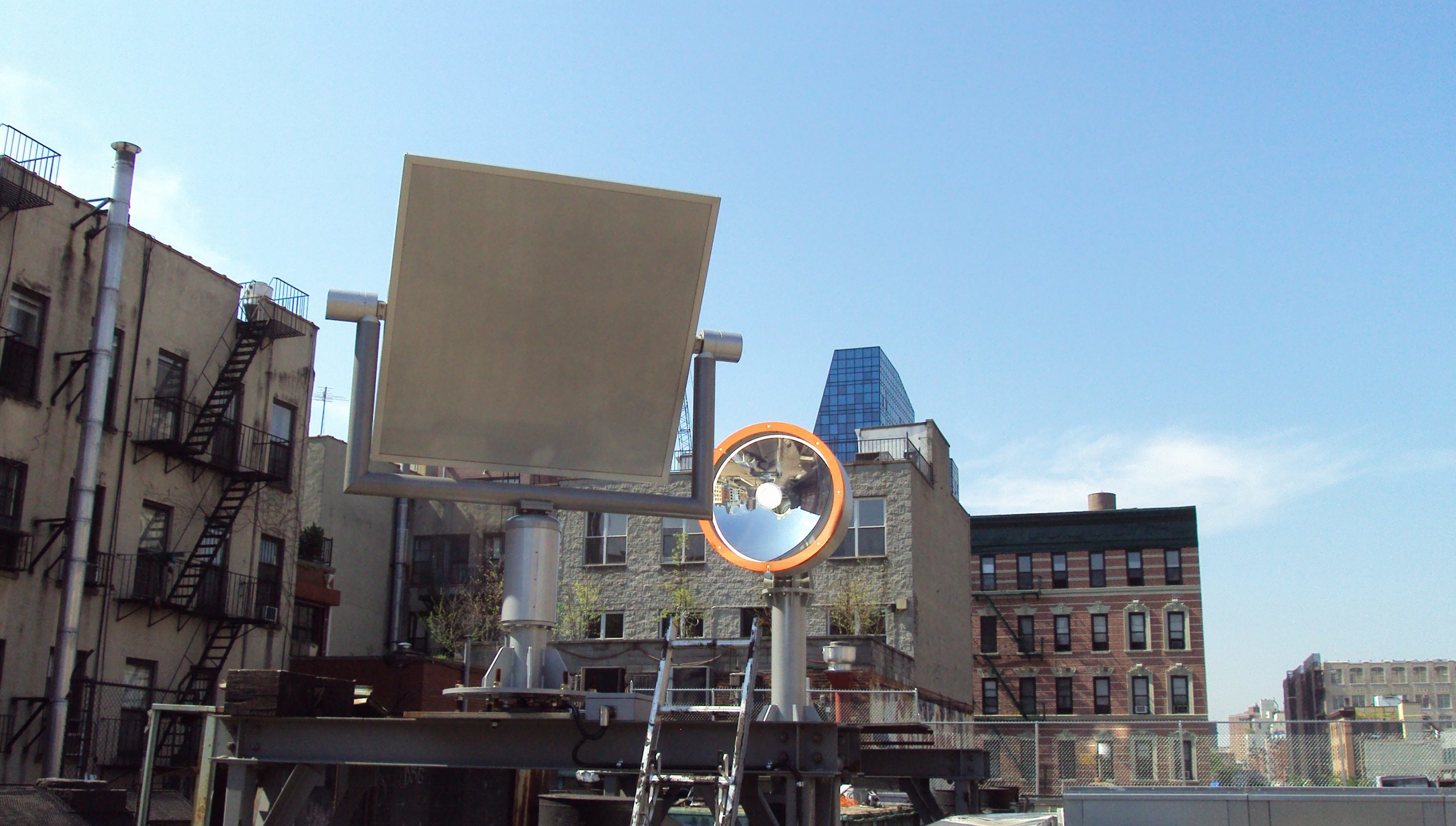Daylight is one of the basic needs of human beings. With its natural spectrum it creates a vivid, constantly changing atmosphere, contributing to our well-being.
Natural light is not only free of charge but it is also the most agreeable light for human beings. It has a positive influence on our health and our well-being, and it increases our performances.
Sunlight deflection with mirrors
From Lumena you get a clever daylight system to bring daylight into every room. Depending on the incidence of light and spatial conditions, so-called heliostats are used. Heliostats are self-aligning mirrors for precise control of sunlight. The directed sunlight can either be used to generate energy or it can be used to illuminate windowless zones, to brighten shaded objects or as a source of natural light.
Proven invention from age of antiquity
The idea of using the sun for lighting purposes was first conceived in ancient times. Today we know that the ancient Egyptians also used bronze mirrors to illuminate their monumental buildings. The mirrors were manually adjusted to the position of the sun.
Today, the sun is captured and directed by means of so-called heliostats (Greek “sun” and “bring it to a halt”). The term originates from astronomy and refers to a device with flat mirrors that is moved by means of clockwork and constantly casts the image of a celestial body into a fixed telescope.

Daylight is one of the basic needs of human beings. With its natural spectrum it creates a vivid, constantly changing atmosphere, contributing to our well-being.
Natural light is not only free of charge but it is also the most agreeable light for human beings. It has a positive influence on our health and our well-being, and it increases our performances.
Sunlight deflection with mirrors
From Lumena you get a clever daylight system to bring daylight into every room. Depending on the incidence of light and spatial conditions, so-called heliostats are used. Heliostats are self-aligning mirrors for precise control of sunlight. The directed sunlight can either be used to generate energy or it can be used to illuminate windowless zones, to brighten shaded objects or as a source of natural light.
Proven invention from age of antiquity
The idea of using the sun for lighting purposes was first conceived in ancient times. Today we know that the ancient Egyptians also used bronze mirrors to illuminate their monumental buildings. The mirrors were manually adjusted to the position of the sun.
Today, the sun is captured and directed by means of so-called heliostats (Greek “sun” and “bring it to a halt”). The term originates from astronomy and refers to a device with flat mirrors that is moved by means of clockwork and constantly casts the image of a celestial body into a fixed telescope.

